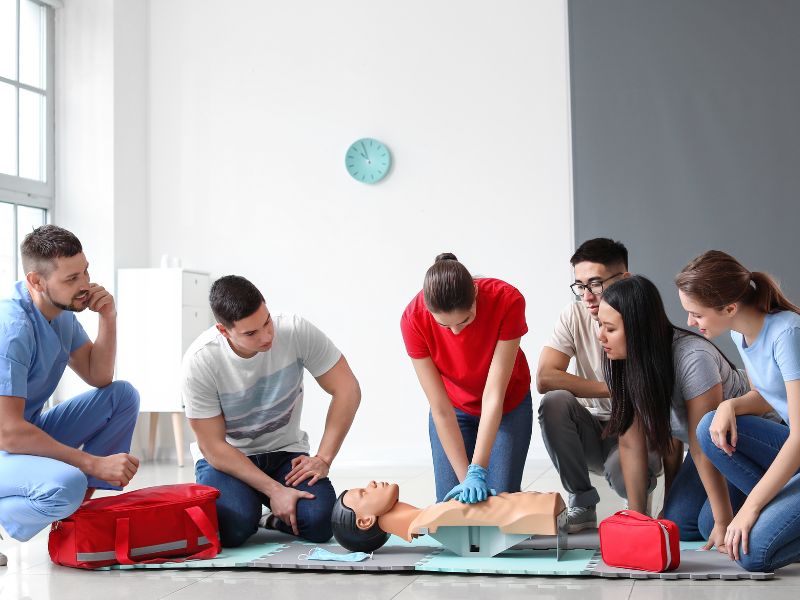
The Importance of First Aid Training
How First Aid Training Saves Lives and Enhances Safety
Training in first aid is essential to ensure the safety and well-being of individuals in emergency situations. This type of training not only equips individuals with the skills to effectively handle emergency situations but also adds confidence and tactical ability to their repertoire when they need it most.
Benefits of First Aid Training
First aid training offers numerous benefits. On a personal level, it enables individuals to provide timely assistance in medical emergencies, thus reducing the severity of injuries and increasing the chances of survival for victims in various contexts. At the community level, a well-trained population can react much more effectively to emergencies, thereby enhancing the collective resilience of the community as a whole.
Key Elements of Training
First aid training covers several fundamental aspects, including recognizing emergency signals, managing airways, cardio-pulmonary resuscitation (CPR), and using automated external defibrillators (AEDs). Additionally, training informs people on how to address issues such as bleeding, fractures, and burns. Another crucial element of the training is the mental aspect, which helps participants remain calm and act quickly and accurately in a high-stress environment.
Integration of Training in Schools and Workplaces
By integrating first aid education into school curricula and workplace environments, a safer and more protected environment can be created. Schools can include first aid courses as part of the standard curriculum, while businesses can regularly organize training sessions for employees. This approach not only improves safety but also promotes a culture of responsibility and readiness that can be vital in emergencies.
Success Stories
Many success stories demonstrate the importance of first aid training. For example, there have been cases where employees of companies have saved colleagues in full cardiac arrest thanks to their training in CPR and the rapid use of a defibrillator. These examples highlight how training can make the difference between life and death and underscore the importance of spreading such skills to the broader public.
First aid training is now the lifeblood of both individual and collective safety. Investing in these training programs not only saves lives but also promotes a culture of readiness and responsibility. It is essential for schools, businesses, and community organizations to continue to promote and support access to first aid training.
Sources


